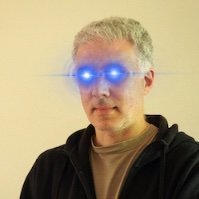Search the Community
Showing results for tags '7285'.
-
I can't recall when it was. Perhaps it was 5 years ago, perhaps more. I don't remember, really. But I had just bought a roll of Ektachrome 7285 and I had recently acquired a Braun Super 8 camera. The camera really is beautiful and it's no wonder that Jonathan Ive used Braun products as inspiration. Anyway, I caught up with a friend one Sunday at local park and I took my camera with me. For a reason that will never be clear, I never got around to processing that roll of Super 8 Ektachrome. I just stuck it in a drawer and left it there, thinking that one day I would eventually get it processed. In late May, I realized that I should just get it done. I have the spare cash, so why not? So I did a bit of hunting around and found Nanolab, an Australian lab that's located in Daylesford. I live in the Melbourne metro area, and Daylesford is NW of there. It's about a 2 hour drive away, and apparently it's a lovely part of the state. Anyway, I posted my film in late May and got it five weeks later. The method of ordering is methodical. Firstly, you fill out a form online, then you get an email with an invoice number, after which you pay. You then post off your film with the invoice number visible somewhere. If you want the scan sent to you on physical media, you have to supply a USB stick. You have a choice to not have the scan done, but keep in mind that they don't scan film already processed - they only scan film after they process themselves. I think it's a good idea from their perspective, as it keeps their operation simple. You choose between HD and 4K (UHD). I chose 4K and I supplied a USB stick. The processing and scanning together cost AU$96. I'm pretty sure that postage to Nanolab was $8.95. That's not counting the cost of the film, which I bought over 5 years ago. Some would think that 4K is wasted on such a small gauge, but that's simplistic thinking. You always want to oversample your film image, as much as is possible. Remember: the grain is the image. The better resolved the grain, the better the fidelity of the image. And 4K enlarges better - a 4K projection of Super 8 film on a large screen will be pretty close to projecting the film directly. I'm not going to say that Nanolab has the best scanner in the world, but I'm happy enough with the result. I am grateful that they scan as much of the film width as possible, including the sprocket holes. This is not because I want to exhibit the film with the sprocket holes visible, but it lets me know that I have 100% of the frame available to me and I can crop how I like. Given that the latent image just sat there for at least 5 years, the footage looks okay to me. In this case, I forgot to clean the edges of the gate, so there is dust visible. Many years ago, when we were still shooting Kodachrome, I took some care to clean the gate with some Blu-Tac (or at least that's what I remember - I know I did so with the projector at least). I also shot handheld, but the footage wasn't too shaky. Maybe next time I will test the apertures and figure out which is the sharpest. I didn't take exposure notes, but I know I tried to get the correct exposure as much as I could. I shot at 24fps and I will do so exclusively in the future. Of course, shooting time lapse is a different thing. In addition, if you're shooting an interior and there are no moving objects, you can shoot at a slower frame rate to increase exposure in low light. Just remember to pan very slowly - perhaps a motorised head would be helpful there. What I want to do now is to get a bit more acquainted with Resolve so I can use the stabilisation feature. There are a few shots that could benefit from that, although I do take care to hold the camera steady. Some people post very shaky footage online and I can't watch it. It's atrociously bad, and I don't want that for my footage. So I won't be posting the file yet. However, I have extracted some frames which I'm posting online in full size. The scan file is ProRes 4:2:2 (see attachment). The frames were saved as high quality JPEG 2000 files and the file size was supposed to be under 4MB. But Postimage changed them to PNG and now they're twice as large. I only noticed that after I uploaded them. Well what can you do... https://postimg.cc/w1nz19XZ https://postimg.cc/V0sQxvwr https://postimg.cc/0McHJfgj https://postimg.cc/YjCPBJgW I hope that you found this interesting!
-
- ektachrome
- 7285
-
(and 1 more)
Tagged with:



